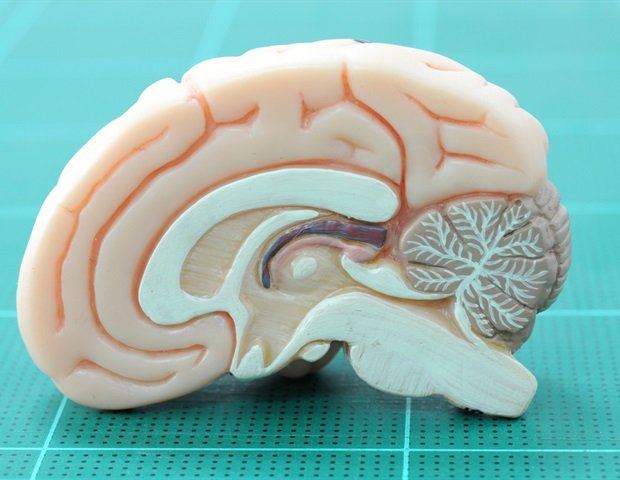Using machine learning, researchers can use data from the brain to glean deeper insights and apply this new knowledge to clinical practice. The findings will be presented at Neuroscience 2023, the annual meeting of the Society for Neuroscience and the world’s largest source of emerging news in brain science and health, on Monday, November 13th from 2:00pm to 3:00pm EST. It is scheduled to be done.
Machine learning is a branch of artificial intelligence (AI) that focuses on enabling computers to analyze data in increasingly complex ways. Researchers use algorithms with adaptive models that can be modified and developed without external intervention. In neuroscience research, machine learning can also study large datasets containing information from the human brain and apply models to predict outcomes based on that information.
New research shows:
- Researchers applied neuroimaging techniques to detect abnormal brain regions in psychiatric disorders and were able to identify activity between the thalamus and motor-related areas that correlates with symptoms of depression. (Ayumu Yamashita, International Telecommunications Research Institute)
- Machine learning models using patient data can predict progression from mild cognitive impairment (MCI) to Alzheimer’s disease (AD). Their research focuses on the use of kPCA (Kernel Principal Component Analysis). (Nikita Goel, University of Southern California)
- A new application of artificial neural networks could reveal how cells in the visual cortex interpret light signals from the retina and translate that data into vision. (Dan Butts, University of Maryland)
- Researchers applied a machine learning model to deep brain recordings and combined it with traditional control theory techniques to create a tool to predict targets for deep brain stimulation (DBS). This optimization is useful in the treatment of pediatric dystonia. (Maral Kasiri, University of California, Irvine)
”Advances in AI and machine learning are transforming brain research and clinical treatments. ” Terry Sejnowski, Francis Crick Professor at the Salk Institute for Biological Studies and Distinguished Professor at the University of California, San Diego, moderated the press conference. “Brain recordings generate huge datasets that can be analyzed with machine learning. Predictive modeling, machine-brain interfaces, and neuroimaging/neuromodulation will help develop new treatments and treatment plans for patients. This is a particularly promising area.”
This research was supported by national funding agencies such as the National Institutes of Health and private funding organizations. Learn more about AI and brain research here. BrainFacts.org.
Monday, November 13, 2023
2-3pm ET
Walter E. Washington Convention Center, Room 202B
Press conference summary
- These presentations explore the rich data that can be extracted and analyzed using machine learning. These topics range from predictive modeling to identify brain activity in disorders such as Alzheimer’s disease (AD) and depression (the first two studies) to deep brain networks to advance analysis and treatment of the brain’s complex visual system. applications of the model (third and fourth studies). , Each).
An unsupervised feature selection method that robustly extracts resting-state functional connectivity associated with major depressive disorder.
Ayumu Yamashita [email protected]abstract PSTR099.15
- Researchers used a combination of neuroimaging techniques and machine learning to identify brain biomarkers. Researchers used his three feature selection methods on major depressive disorder (MDD) to determine how accurately and reliably these techniques detect abnormal brain regions in psychiatric disorders. Did.
- Among the three methods, we found that the unsupervised-based feature selection method reliably extracted functional connections with larger effect sizes in the test data. Using MRI data from 1,162 patients, including 334 with depression, researchers found coordinated activity between parts of the brain (particularly the thalamus and motor-related areas) that correlate with symptoms of depression. Extracted.
Machine learning and 3D brain MRI predict future decline from mild cognitive impairment to Alzheimer’s disease
Nikita Goel [email protected]abstract NANO03.07
- Predictive models use machine learning to try to determine who will develop brain disorders such as AD. Researchers used a variety of models to examine models that predict mild cognitive impairment (MCI) progression to AD.
- Researchers used MRI scans along with demographic and genetic data from more than 2,448 people. The most functional model they developed used kPCA (kernel principal component analysis) to combine scan data with data about AD risk genes and basic patient data to generate new features.
Biologically Constrained Deep Neural Networks for Analyzing Visual Computations Performed in the Primary Visual Cortex
Dan Butts [email protected]abstract PSTR149.16
- Researchers used a new application of artificial neural networks called convolutional deep neural networks (CNNs) to learn how cells in the brain’s visual cortex interpret light signals captured by the retina. .
- Researchers are beginning to use machine learning to understand how information about the visual world is transmitted through brain cells in the visual cortex.
Identifying effective targets for deep brain stimulation: Identifying systems using simple recurrent neural networks
Maral Kasiri [email protected]abstract PSTR154.16
- Clinicians face challenges with deep brain stimulation (DBS) when determining optimal targets within the brain. In this way, treatment can be tailored to the specific patient and better treat movement disorder symptoms.
- Based on the unique brain signals of brain regions (basal ganglia and thalamus) in children with dystonia, machine learning can be applied to develop models of deep brain networks in combination with traditional control theory and statistical methods. The end result is a tool to identify the most favorable DBS targets for patients.

